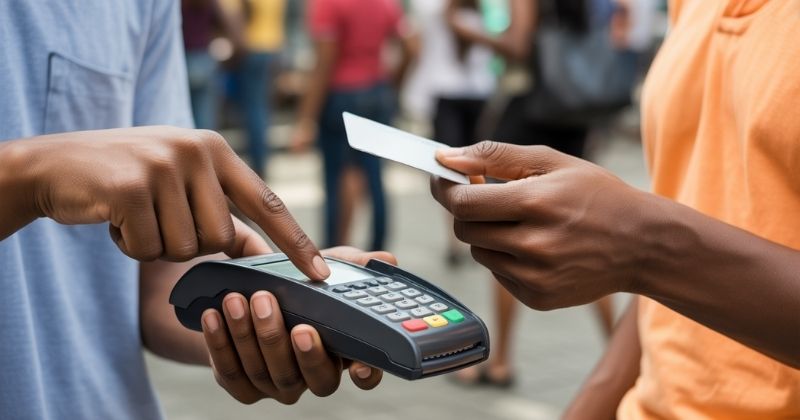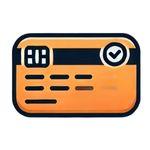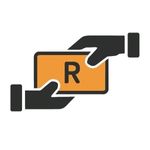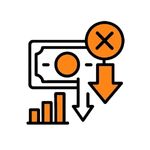
Managing everyday expenses in South Africa often means choosing between a credit card and a personal loan, each offering distinct benefits depending on your needs. A credit card provides flexible, ongoing access to credit for short-term spending or emergencies, while a personal loan offers a fixed lump sum with predictable monthly repayments for larger, planned expenses. By understanding how each works and considering your repayment ability, you can choose the option that best suits your financial goals and spending habits.
Key Takeaways
- Credit cards suit smaller, everyday costs: Ideal for groceries, fuel, and short-term spending if repaid within the interest-free period.
- Personal loans fit larger or planned expenses: Best for structured repayments and managing predictable or consolidated costs.
- Borrow only when necessary: Avoid credit for non-essential items and always ensure repayments fit your budget.
About Arcadia Finance
Secure your loan quickly and confidently with Arcadia Finance. Compare trusted lenders, pay no application fees, and enjoy options fully approved by South Africa’s National Credit Regulator.
What Counts as Everyday Expenses?
Everyday expenses refer to the regular costs that households face just to keep life running smoothly. These include necessities such as groceries, fuel, public transport fares, rent, electricity, water, mobile data, and school-related costs. In South Africa, these items often take up most of a person’s income, leaving little room for savings or emergencies. Inflation, rising food prices, and frequent fuel hikes have made these expenses even harder to manage month after month. For many households, credit has become a way to fill the gap between paydays, but using it wisely is key.
| Expense Category | Average Monthly Cost (R) | Description |
|---|---|---|
| Groceries | 3 000 – 6 000 | Food and basic household supplies for individuals or families. |
| Transport | 500 – 1 000 (public) / 2 500 – 4 000 (car) | Public transport fares or fuel and vehicle maintenance costs. |
| Utilities | 1 500 – 2 500 | Electricity, water, and municipal service charges. |
| Mobile Data & Internet | 800 – 1 200 | Internet subscriptions and mobile data bundles. |
| School Costs | 1 000 – 3 000 | Fees, uniforms, stationery, and related expenses. |
| Healthcare & Insurance | 1 000 – 2 000 | Medical aid premiums or routine healthcare costs. |
| Personal Care & Household Goods | 800 – 1 500 | Toiletries, cleaning products, and everyday essentials. |
When Salaries Don’t Stretch to Month-End
It’s increasingly common for working individuals to run out of funds before the next paycheque arrives. Unexpected costs such as school events, higher fuel prices, or medical bills can tip a tight budget into deficit. According to recent household trends, many South Africans use credit cards or short-term loans to bridge this gap. While these options offer relief, they can quickly lead to recurring debt cycles if not managed carefully.
Short-Term Credit and Managing Cash Flow
Short-term credit has become a financial lifeline for households facing temporary shortfalls. Products such as revolving credit, payday loans, and flexible personal loans provide immediate access to funds when cash flow is tight. Used wisely, they can help smooth out irregular expenses and avoid missed payments on essentials. However, over-reliance on short-term borrowing can erode long-term financial stability. It’s important to compare interest rates, understand repayment terms, and borrow only what’s necessary to stay in control of your finances.

Option 1: Using a Credit Card for Daily Spending
Credit cards are one of the most common ways South Africans manage everyday expenses. They provide quick access to funds without needing to reapply each time, making them convenient for groceries, fuel, and small purchases throughout the month. However, while they offer flexibility, understanding how they work and what the costs involve is crucial to avoid debt traps.
How Credit Cards Work in South Africa
A credit card allows you to borrow up to a set limit approved by your bank. You can make purchases throughout the month and repay the balance in full or over time. If you repay the full balance within the interest-free period (usually between 45 and 55 days), you won’t pay any interest. But once you start carrying a balance, interest is charged monthly on the outstanding amount. South African banks also apply service and annual fees, which can add to the overall cost of maintaining a card.
Pros
- Quick and easy payments: Accepted at almost all stores and online platforms, making daily transactions effortless.
- Rewards and cashback: Many banks offer loyalty points or discounts on groceries, fuel, and travel.
- Emergency access to funds: A useful fallback when unexpected expenses arise before payday.
- Builds credit history: Responsible use can strengthen your credit score, improving future loan eligibility.
Cons
- High interest rates: Annual percentage rates (APRs) can exceed 20%, making unpaid balances expensive over time.
- Minimum payment pitfalls: Paying only the minimum keeps accounts active but barely reduces the principal debt.
- Encourages overspending: Easy access can lead to impulse buying or using credit for non-essential items.
- Hidden fees: Late payment penalties, over-limit charges, and annual fees can add up quickly.
Used correctly, a credit card can be a practical tool for managing day-to-day expenses. But if not repaid in full each month, it can become one of the most expensive forms of short-term borrowing.

Option 2: Taking a Personal Loan for Daily Expenses
Personal loans are another way South Africans manage short-term financial gaps or cover recurring costs. Unlike a credit card, which gives revolving access to funds, a personal loan provides a fixed amount upfront that is repaid in regular instalments. This can be helpful when you need predictable payments or want to consolidate smaller expenses into one manageable plan.
When a Personal Loan Makes Sense
A personal loan can be a sensible choice if you need a lump sum to handle larger monthly costs, such as school fees, household repairs, or medical bills, rather than day-to-day purchases. It’s particularly useful for those who prefer a set repayment structure and want to avoid the temptation of ongoing credit use.
Pros
- Fixed repayments: Monthly instalments remain the same, making budgeting easier.
- Potentially lower interest: Rates are often lower than those of credit cards, especially for borrowers with good credit scores.
- Larger borrowing limits: Allows you to cover significant expenses without juggling multiple smaller debts.
- Debt consolidation: Can combine several high-interest debts into one affordable repayment.
Cons
- Less flexibility: You receive a lump sum, so it’s not practical for everyday swipe-and-go spending.
- Application process: Requires a formal application, affordability checks, and documentation.
- Interest from day one: Unlike credit cards, interest starts accruing as soon as the loan is disbursed.
- Early settlement fees: Some lenders charge a penalty if you repay the loan ahead of schedule.
In short, a personal loan offers structure and predictability but isn’t suited for daily purchases. It works best for planned or consolidated expenses rather than small, frequent transactions.
Choosing Between a Personal Loan and a Credit Card
Deciding whether to use a personal loan or a credit card largely depends on your current financial position and what you intend to finance. Both options provide access to credit, but their structure, cost, and suitability vary depending on your needs.
| Aspect | Personal Loan | Credit Card |
|---|---|---|
| Best For | Larger, one-off expenses or consolidating high-interest debts. | Smaller, recurring purchases and flexible access to revolving credit. |
| Structure | Fixed lump sum with a set repayment period. | Revolving credit limit that replenishes as you repay. |
| Interest Rates | Typically lower and fixed for the full term. | Usually higher and variable, charged on outstanding balances. |
| Repayment | Predictable monthly instalments over a defined term. | Flexible payments, but only paying the minimum can lead to long-term debt. |
| Example Use Case | Funding home improvements in Cape Town or consolidating multiple debts. | Covering travel costs or frequent purchases in Johannesburg and abroad. |
| Key Benefits | Easier budgeting, lower interest rates, and long-term financial control. | Instant access to funds, rewards, and flexible repayment options. |
| Key Consideration | Ideal for planned, significant expenses. | Ideal for ongoing, smaller transactions. |
| Responsible Borrowing Tip | Compare offers, review fees, and ensure repayment affordability. | Stay within your limit and repay the full balance monthly. |
When to Choose Which Option
Choosing between a credit card and a personal loan depends on how often you need access to credit and what type of expenses you’re managing. Each option serves a different financial purpose, and using them appropriately can help you stay in control of your budget.

Credit Card: For Small, Repetitive Costs
Credit cards are ideal for frequent, smaller transactions such as groceries, fuel, or online purchases. They offer convenience and flexibility, allowing you to buy now and repay later, often with an interest-free period if paid in full. A credit card works best when you’re disciplined with repayments and avoid carrying over balances from month to month.

Personal Loan: For Consolidated or Predictable Expenses
A personal loan suits situations where you need a larger, one-time amount or when you want to consolidate several debts into one manageable repayment plan. It’s also useful for planned expenses such as home improvements, education costs, or medical procedures. The fixed repayment structure helps with budgeting and limits the temptation to overspend.

Neither: When Saving or Cutting Costs Is Possible
Sometimes, the best financial decision is not to borrow at all. If an expense can be delayed, reduced, or covered through saving, it’s often wiser to avoid taking on new debt. Adjusting spending habits, finding cheaper alternatives, or creating an emergency fund can ease financial pressure without incurring interest or fees.
Conclusion
When comparing personal loans and credit cards, the most suitable choice depends on your spending habits, financial discipline, and repayment goals. A personal loan offers structure, predictability, and lower interest rates for larger or once-off expenses, while a credit card provides convenience and flexibility for smaller, recurring purchases. However, misuse of either form of credit can lead to financial difficulties. South Africans should carefully assess their income, repayment ability, and the true cost of borrowing before committing. Making a responsible choice will help maintain a healthy credit profile and support long-term financial stability.
Frequently Asked Questions
A personal loan gives you a fixed lump sum that is repaid in equal monthly instalments over an agreed period, providing certainty about repayment dates and costs. A credit card, on the other hand, offers revolving credit, meaning you can continuously borrow and repay within your credit limit, making it more flexible but potentially riskier if not managed well.
Generally, personal loans tend to be more affordable because their interest rates usually range from 11% to 28%, depending on your credit score and lender. In comparison, credit cards often charge between 18% and 27% or more, and the cost can rise quickly if you carry an outstanding balance over several months.
A personal loan is the better choice for larger, planned expenses such as home renovations, vehicle repairs, or medical procedures. It is also ideal for debt consolidation since it offers fixed repayments and a defined loan term, helping borrowers manage their monthly budgets with more discipline and predictability.
A credit card is more suitable for smaller, everyday purchases like groceries, fuel, or online transactions, particularly if you are confident about repaying the full balance within the interest-free period. It can also be beneficial for emergencies or travel-related spending, as it often includes added benefits such as fraud protection and rewards programmes.
Yes, it is possible and sometimes practical to use both a personal loan and a credit card for different financial needs. For example, a personal loan may cover long-term or high-value expenses, while a credit card can handle short-term or unexpected costs. The key is to keep track of both debts carefully, ensure that repayments are made on time, and avoid relying too heavily on revolving credit to prevent unnecessary financial strain.
Fast, uncomplicated, and trustworthy loan comparisons
At Arcadia Finance, you can compare loan offers from multiple lenders with no obligation and free of charge. Get a clear overview of your options and choose the best deal for you.
Fill out our form today to easily compare interest rates from 19 banks and find the right loan for you.




